
Over the past year, California has experienced drought, wildfires, floods, mudslides, and extreme cold. The rest of the Southwest has seen the same crazy extremes and has experienced high-damage potential within a short time span. Everyone will have some rethinking to do, whether making structural repairs or just replanting to return beauty to the landscape. For others, it may require a whole new assessment of site planting and soil protection.
There is just one group of important plants that are called for this spring to heal the land. John James Ingalls tells us why in a most eloquent quote:
Grass is the forgiveness of nature–her constant benediction. Fields trampled with battle, saturated with blood, torn with the ruts of cannon, grow green again with grass, and carnage is forgotten. Streets abandoned by traffic become grass-grown like rural lanes and are obliterated. Forests decay, harvests perish, flowers vanish, but grass is immortal. – John James Ingalls, Yearbook of Agriculture, 1948
The Power of Grasses
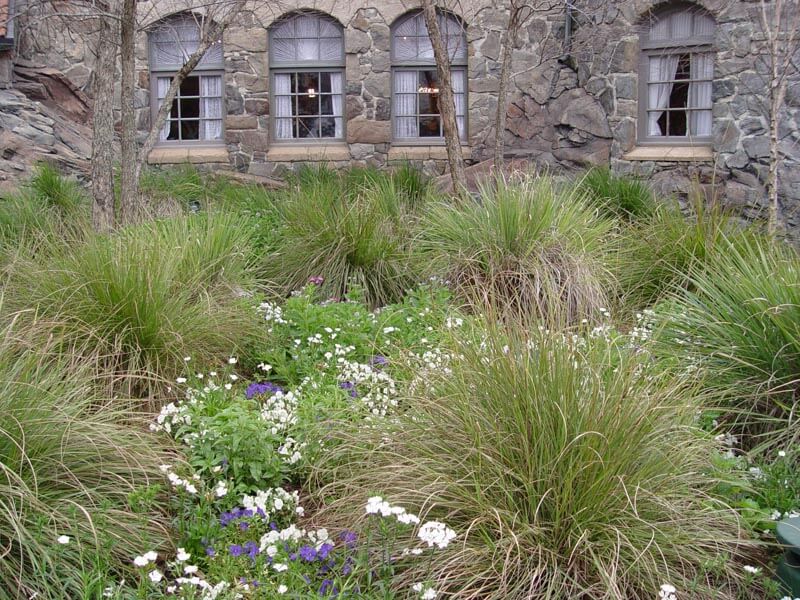
Grasses are natural colonizers. They are nature’s repair mechanism for soil disturbance. Soil bound by grass roots underground and broad foliar coverage above protects the surface from raindrop particle displacement (erosion). On slopes, they are excellent for slowing runoff velocity as well; the slower the water flows, the lower the erosion potential.
This makes grasses the most natural quick fix for gardens and home sites damaged by extreme weather and disasters. Not only are they the ultimate problem solvers for damaged ground, but large ornamental grasses will also turn sparse drought plantings into lush, beautiful landscapes this year. When planted in spring, they flower by mid to late summer with tall animated stems that grow more beautiful as they complete their life cycle.
Grasses produce flowers held well above the foliage to catch the wind, which is integral to their reproduction. When pollen flies from grass plumes amidst prairies or drylands, it is caught on sticky flower parts called pistils for pollination and seed set. In the fall, dry winds help distribute seed far and wide. The remaining seed structures stand barren into winter until knocked down by snow or heavy rain.
Because grasses are found on every continent, their range of tolerances is significant. In dry areas of the Southwest, the soils and water supply are too lean for many species that originate in summer-rain climates. The key is growing grasses that will thrive in our heat and potential drought, so you need not increase irrigation. They should be sufficiently adapted to drought to survive nicely when the wet cycle wanes.
Planting with Grasses
Grasses are such incredibly transformative plants due to fast growth and significant seasonal change. They are the stars of late summer gardens when the flowers are heavy and stems nod and sway in the slightest breeze. Designers know how important this “animation” can benefit an otherwise static garden dominated by rigid cacti, succulents, and arid species.
There are four easy ways to add adaptable grasses to your western landscape this spring.
Create Fast and Easy Fillers
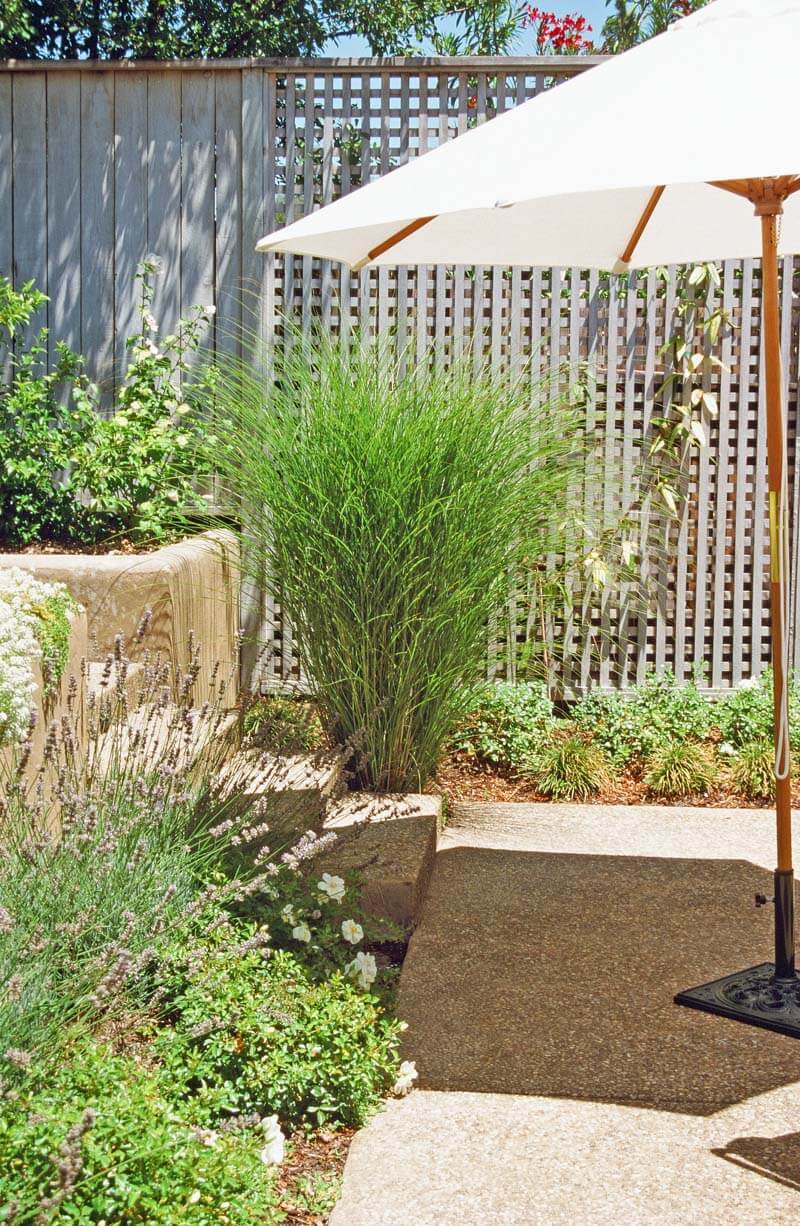
Tall grasses with a significant diameter at maturity, like maiden grass (Miscanthus sinensis ‘Gracilimus’, 7-feet high, USDA Hardiness Zones 5-9), are the fastest way to fill gaps in your planting caused by frost death, washouts, and slope failure. Provided these grasses spots in full sun, and plant to fit a given space. If garden space is too large for just one single specimen, plant a group of three or five for a bigger visual impact.
Add Texture to Succulents
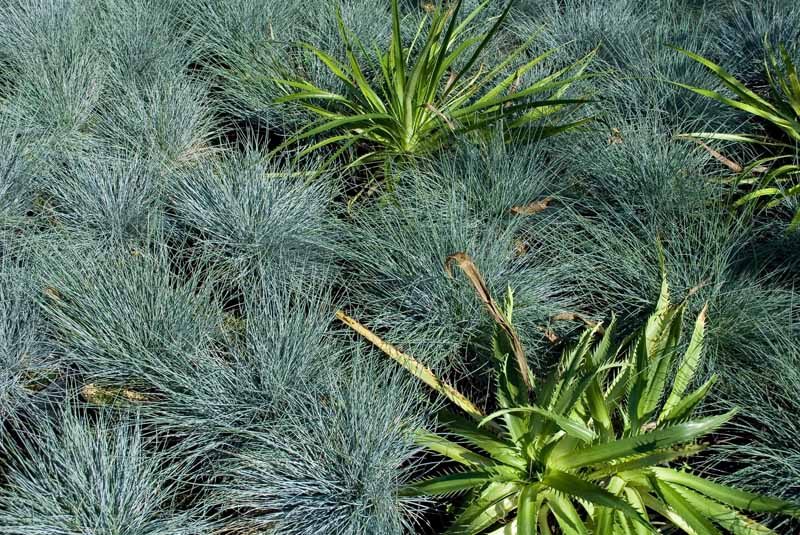
Succulent plants are coarsely textured and physically stable. Blend them with fine-textured shorter grasses that are of similar height to contrast the character of each. Try Mexican feather grass (Nassella tenuissima, 3-feet high, USDA Hardiness Zones 7-10) or blue fescue (Festuca glauca, 1-foot high, USDA Hardiness Zones 4-8) for fine-textured appeal.
Enhance Boulders and Rock Gardens
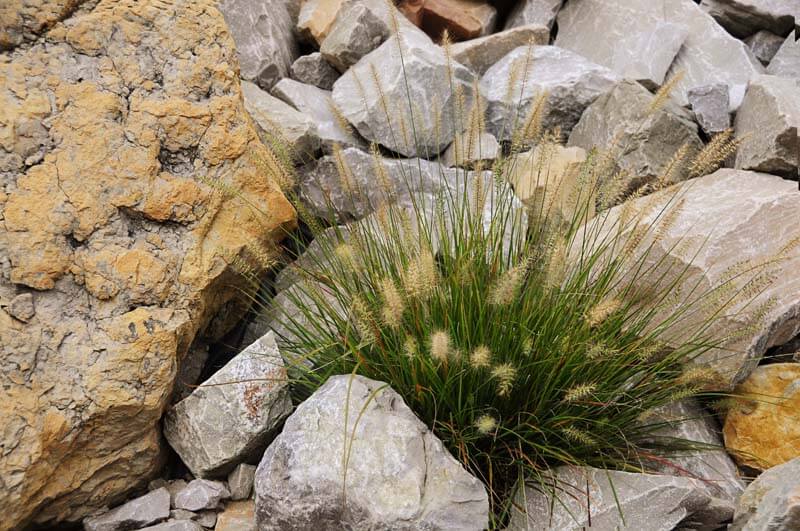
Boulders are always more natural when anchored by grasses. Planting right at the edge allows roots to reach underneath and draw up cool moisture trapped beneath the stone far into summer. Where rocks are plentiful, the roots of grass tend to do better in shallow soils where they find fissures of much greater depth where the water hides. Two kinds of grass for the task are tender fountain grass (Pennisetum setaceum, 5-feet high, USDA Hardiness Zones 9-10) and hardy fountain grass (Pennisetum alopecuroides, 4-high, USDA Hardiness Zones 6-9).
Enhance Background Seasonal Color
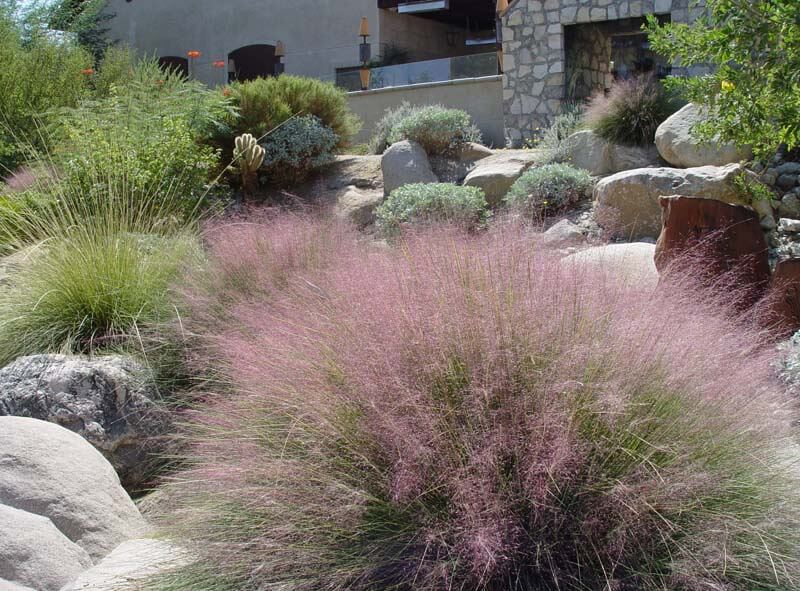
Bedding plant and succulent displays are animated by taller grasses in the background, particularly after blossoms fade. In the fall, when ephemeral annuals wane, the tall flowers of upright or airy ornamental grasses become sculptural. With this background, you’ll never be without interest except in the dead of winter. Deergrass (Muhlenbergia rigens, 4 to 5-high, USDA Hardiness Zones 7-9) is a good selection that offers a cloud of pinkish seasonal color.
Planting Grasses
Because grasses are very active rooters, gardeners planting in clayey soils that tend to clod-up should generously add Black Gold Garden Compost Blend to their backfill at planting time. With heavy clay, like Adobe, mix compost in at a 50/50 ratio with excavated soil. This introduction of copious organic matter will wake up the army of dormant microbes that exist in fertile clays and work with plants to make them more resilient. The organic matter allows new roots to grow much faster and penetrate deeper. Adding compost also helps prevent surface cracking as wet, clayey soils dry out. Cracks in hardpan clay allow water to skim the surface or penetrate too fast in the wrong places, causing irregular saturation.
Let grasses make your garden immortal this year. Celebrate the repair and renewal opportunities that grasses offer to rethink landscaping after a very difficult winter. For those who have suffered from wildfire and flood, turn to Mother Nature’s repair mechanism for all things soil-related to receive her constant benediction.

